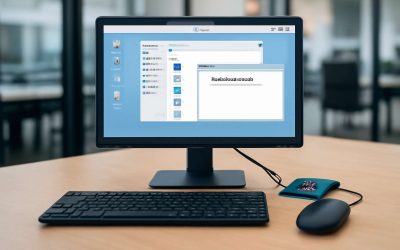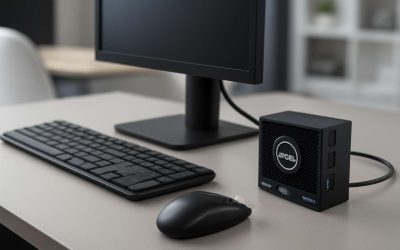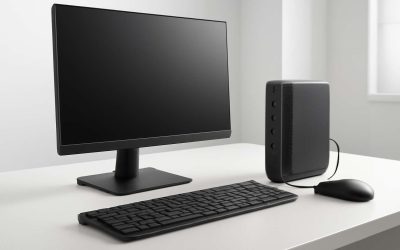When it comes to business computer hardware, thin client devices offer advantages over traditional desktop PCs. Thin client computers, which are based on either shared terminal services, desktop virtualization, or browser-based computing, have a small footprint but still allow for access to all of the resources a business needs, including programs, files, and applications. Thin clients are typically connected to centralized servers that house applications, data, and memory. This allows for a more efficient, secure, and cost-effective computing environment for an organization.
What is a thin client?
A thin client is a terminal device that sends keyboard and mouse input to the server and receives screen output in return. The server then processes all of the processing and applications, leaving the thin client to manage user interfaces and monitor on-screen activity. This model reduces the amount of hardware required for each end-point machine, making it possible to scale a business with minimal investment and maintenance.
This architecture harkens back to the days of centralized mainframe and minicomputer systems, when users only needed terminals to interact with a centralized system. Since the majority of the processing happens in a centralized location, hardware and software updates can be deployed to all thin client machines in an instant. These upgrades can be used to update security policies, fix bugs, or introduce new features for all of the terminals in an organization at once. This is a significant improvement over the traditional process of installing individual operating systems on each individual workstation or device.
For enterprises with large desktop deployments, a thin client solution can significantly cut costs. Providing each employee with a desktop or laptop consumes a lot of the IT budget in the form of hardware, IT support, and maintenance. When organizations shift to a thin client configuration, this overhead goes away and IT departments can allocate funds to other important projects.
Thin clients are also much easier to manage than traditional PCs. The lack of internal components like a hard drive means there are less things that can break or become outdated. They’re also often fanless, which means they can be kept in ventless environments and are less likely to overheat. Lastly, because they’re built to be as reliable as possible, thin client devices can endure more extreme working conditions than standard PCs.
Increasing security with thin client computers
With a thinner, more compact design than typical PCs, thin clients are more resistant to physical damage and less susceptible to cyber threats. Thin clients also don’t have the ability to run unauthorized software, as all processing and storage of files and applications occurs on the server end. This ensures that even if malware is downloaded to the devices, it won’t be able to spread to other terminals or desktops. To keep security at the highest level, businesses can deploy firewalls that protect thin clients and their associated servers from external attacks. For example, an NGFW from Fortinet can help businesses create secure, isolated network segments for their virtual and physical IT environments.



0 Comments